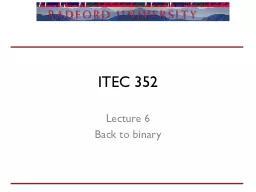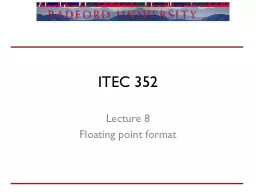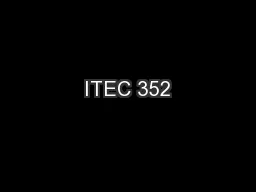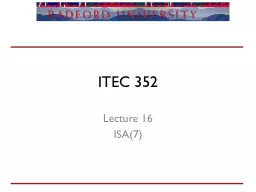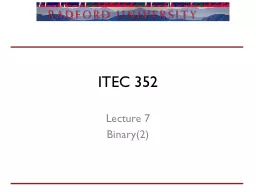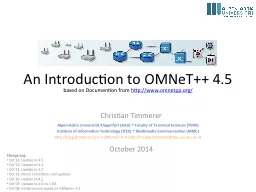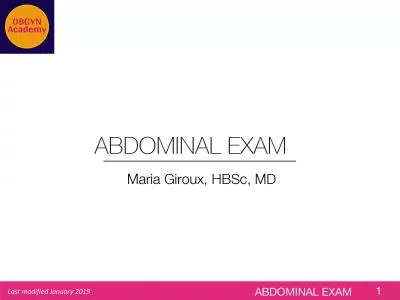PPT-ITEC 352
Author : karlyn-bohler | Published Date : 2016-06-07
Lecture 6 Back to binary Review Decoders 7 segment display Complexity of wiring Questions Outline Homework Binary May be short depending on what you remember from
Presentation Embed Code
Download Presentation
Download Presentation The PPT/PDF document "ITEC 352" is the property of its rightful owner. Permission is granted to download and print the materials on this website for personal, non-commercial use only, and to display it on your personal computer provided you do not modify the materials and that you retain all copyright notices contained in the materials. By downloading content from our website, you accept the terms of this agreement.
ITEC 352: Transcript
Download Rules Of Document
"ITEC 352"The content belongs to its owner. You may download and print it for personal use, without modification, and keep all copyright notices. By downloading, you agree to these terms.
Related Documents

